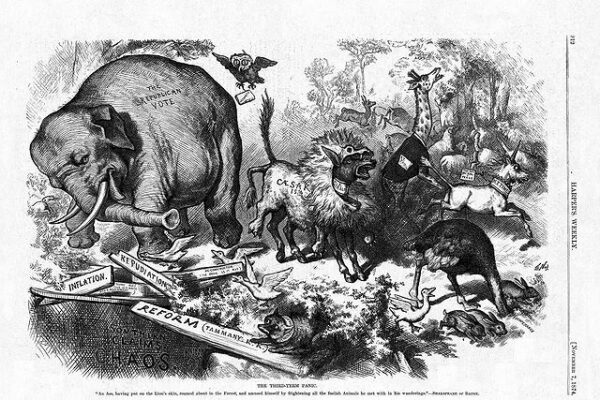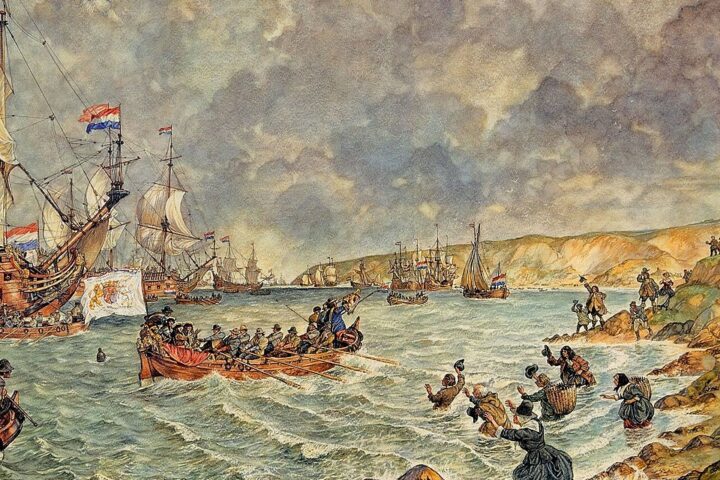On November 7, 1874, a new political icon was launched when Thomas Nast created a cartoon titled “The Third-Term Panic,” depicting the Republican Party as an elephant. This cartoon popularized the elephant as the symbol of the party that remains prevalent to this day.
Nast is also “widely credited with perpetuating the donkey and elephant as symbols for the Democratic and Republican Parties. Nast first used the donkey in an 1870 issue of Harper’s Weekly to represent an anti-war faction with whom he disagreed and in 1871, he used the elephant to alert Republicans that their intra-party fighting was detrimental to the upcoming elections.
However, it was his 1874 Harper’s Weekly cartoon entitled “Third Term Panic” (pictured at right) that solidified the use of symbols.
Republican Ulysses Grant had been president for two terms and was contemplating a third (it wasn’t until 1951 when the 22nd Amendment limited presidents to two terms). The cartoon depicted a donkey wearing a lion’s skin emblazoned with the words “Caesarism” (an undemocratic attempt to wield imperial power) frightening away an elephant wearing the words, “Republican Vote.” After this cartoon appeared, Nast used the elephant again and again to represent the “Republican Vote.” Eventually the “Vote” fell away and the elephant and Republican Party became synonymous, writes Our White House.
Over time, the Republican Party embraced the elephant as its official symbol, and it has remained an integral part of the party’s branding and identity. The elephant symbolizes the party’s heritage, stability, and resilience. It reflects the Republican Party’s commitment to conservative values and its long-standing presence in American politics.






